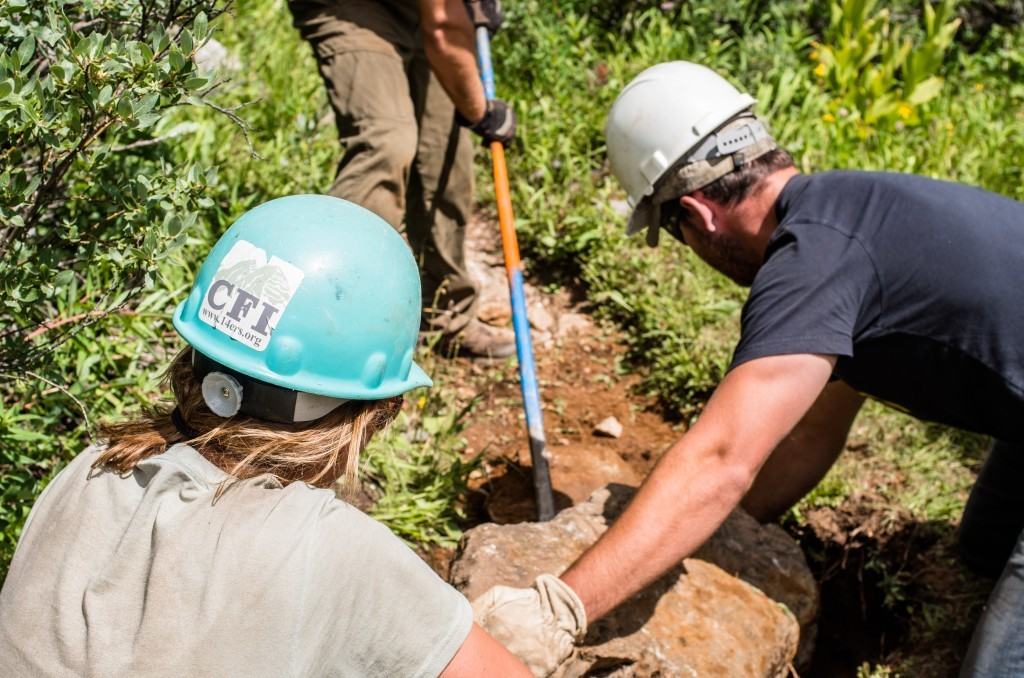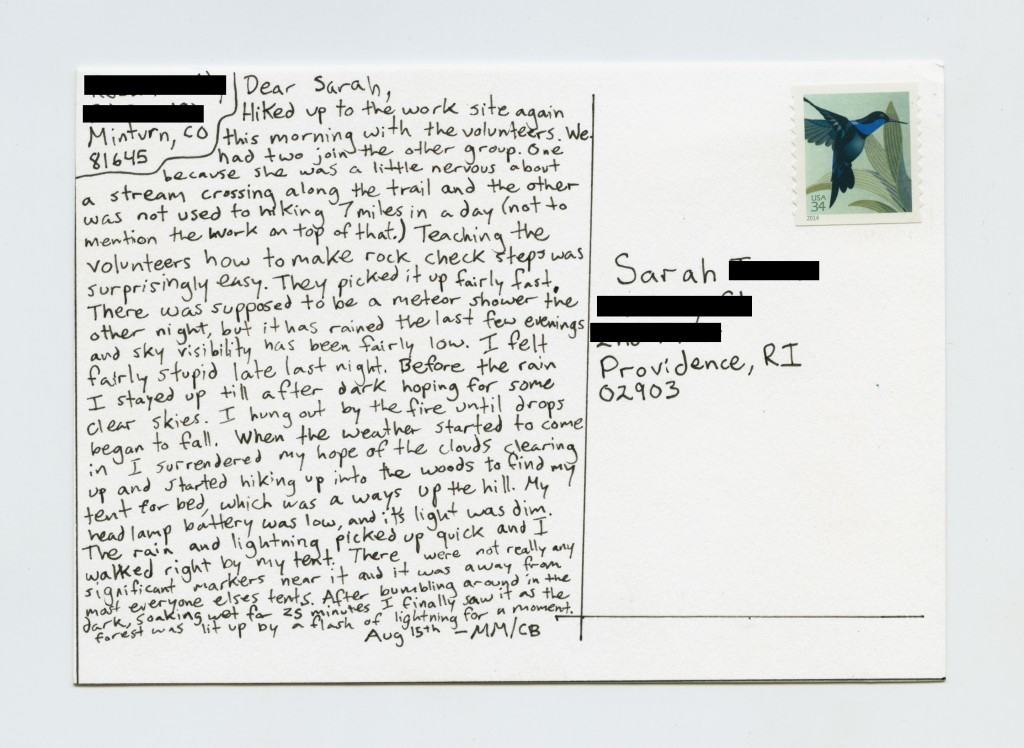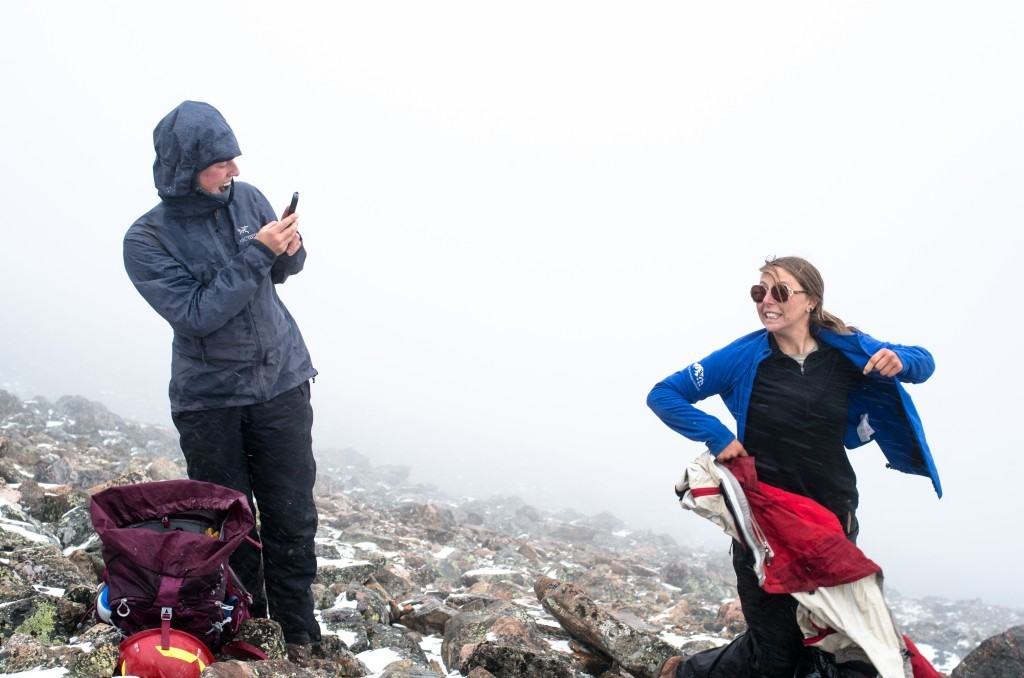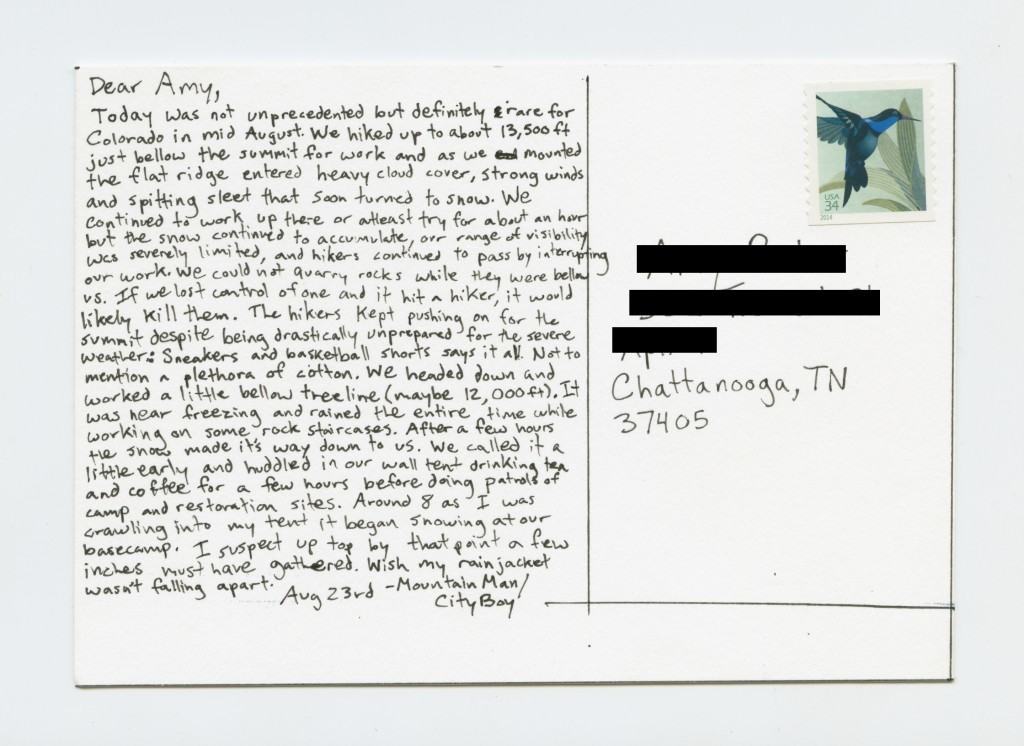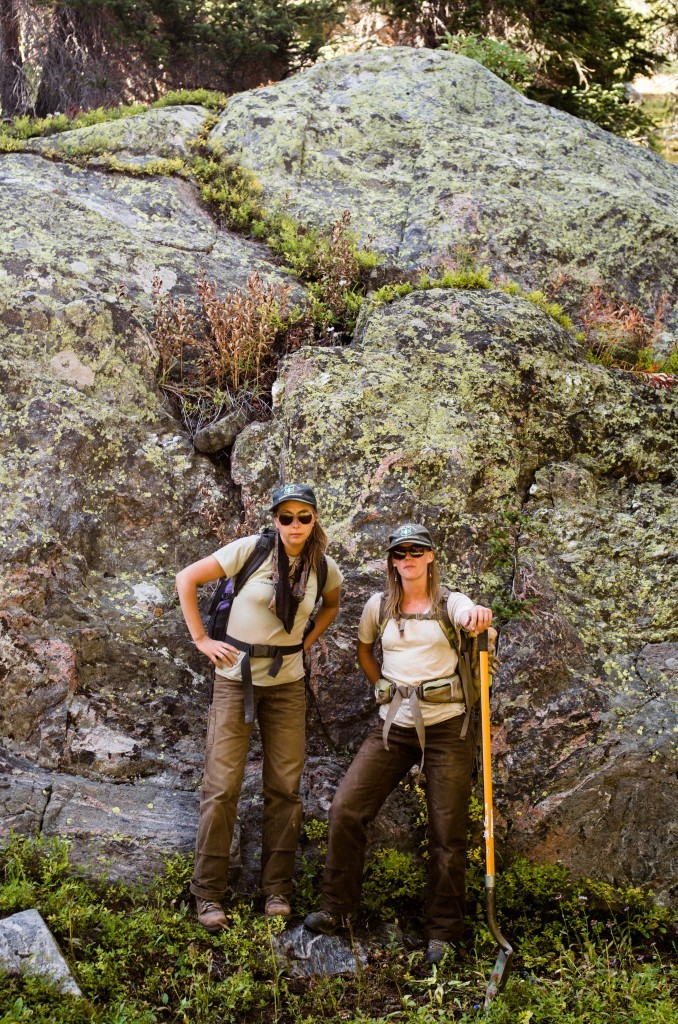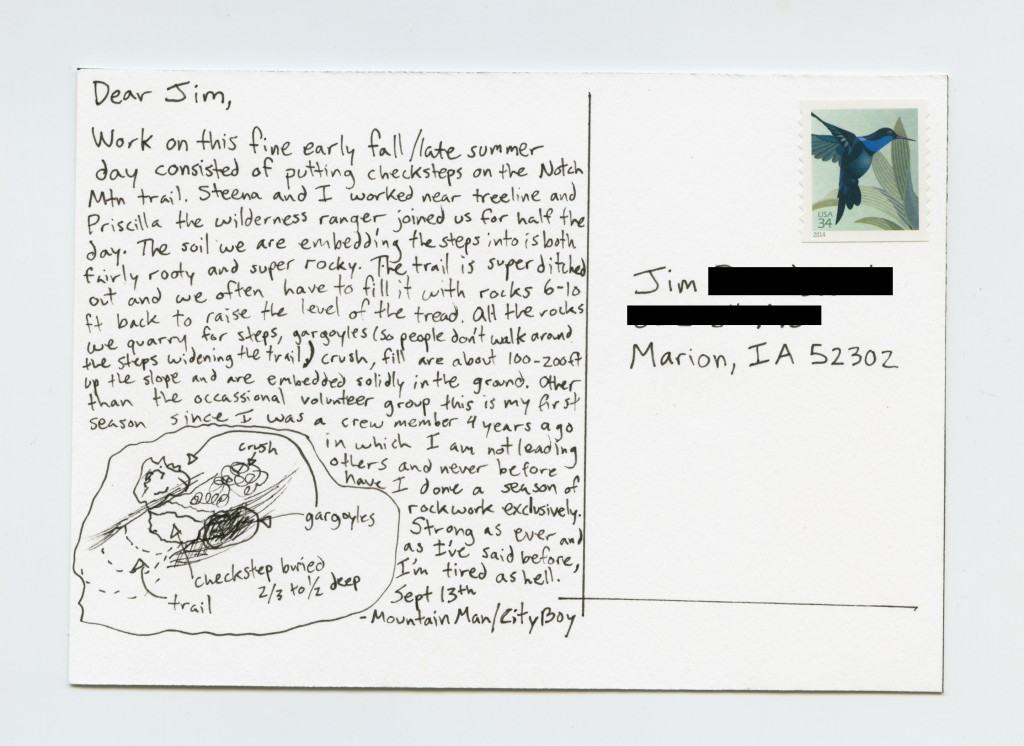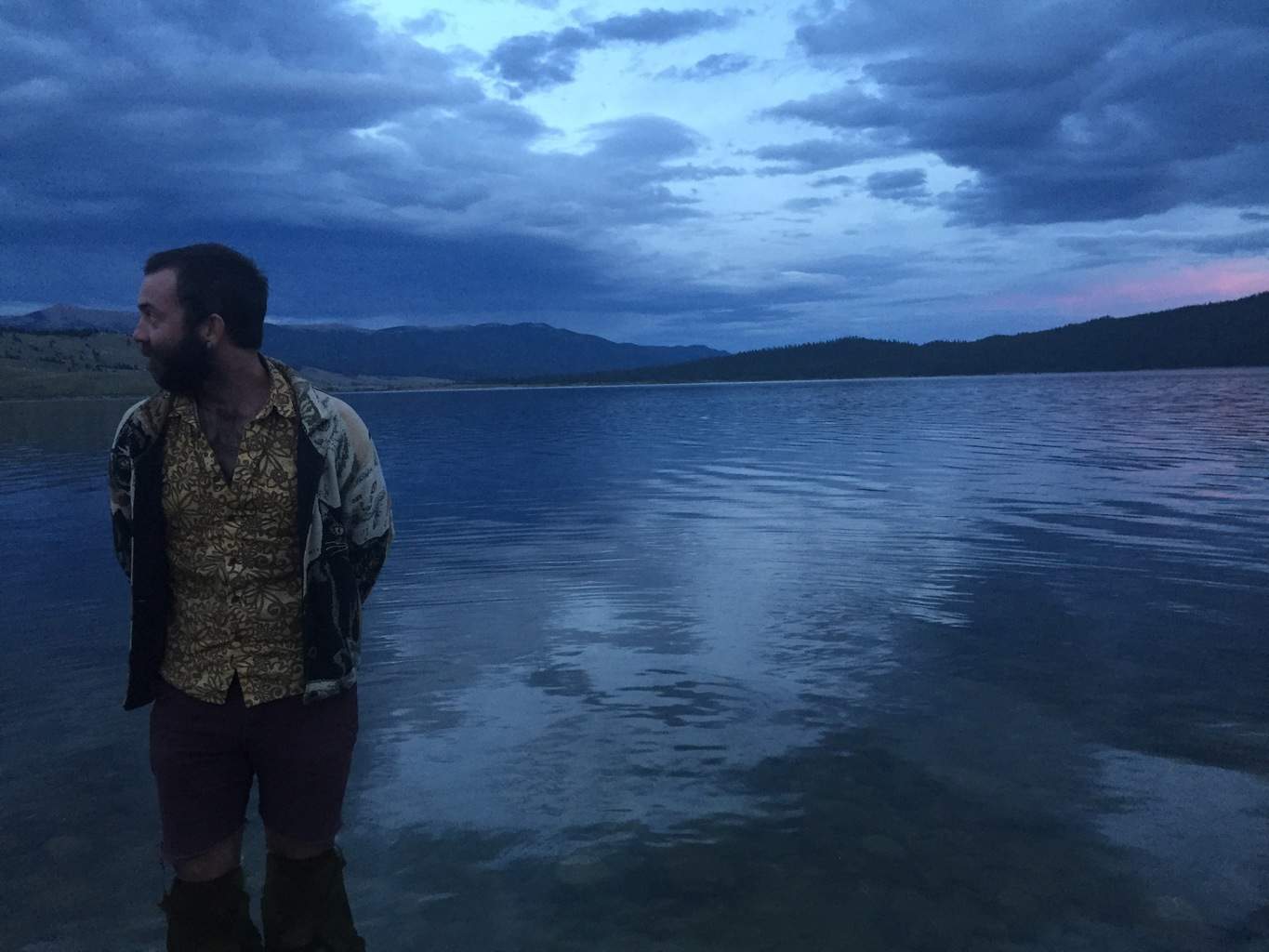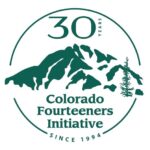“has outstanding opportunities for solitude or a primitive and unconfined type of recreation”
In wilderness areas such as Holy Cross, the characteristic of ‘solitude’ is largely dependent upon what time of year or day of the week you choose to visit. Despite days on the talus in which hundreds of people pass by, a summer of doing trail work withdraws you from much of the “real world”. It is easy to become less aware of what is going on outside of your own secluded location during the trail season. Communication with others hits an all-time low, and the idea of entering crowded cityscapes or staring at the screen of a computer for more than 10 minutes becomes an anxiety inducing sensory overload. When you get a regular dose of nature’s therapy, it is hard to leave it. However, when the snow starts to fall, trail season ends (for those who don’t move south), it is time to go home and reconnect with friends and family elsewhere. Often, the people closest to you can’t quite understand what it is that a trails technician does. This season, I decided to connect with my friends and family to share my mountainside experience, but in a more primitive and personal format than an email or text would allow. Each night, I have written a postcard. Each day, I have taken a photograph. Each weekend, I print out my photos on a tiny portable printer, adhere it to my card and send a segment of my story in the Holy Cross Wilderness out to a group of different friends, family and acquaintances and strangers. Here are a few postcards from the season:
Trail work is not just a job; it is a life. The more that I can share this life with others, the more they are able to understand my work and help me remain connected to the world outside of the wilderness.

